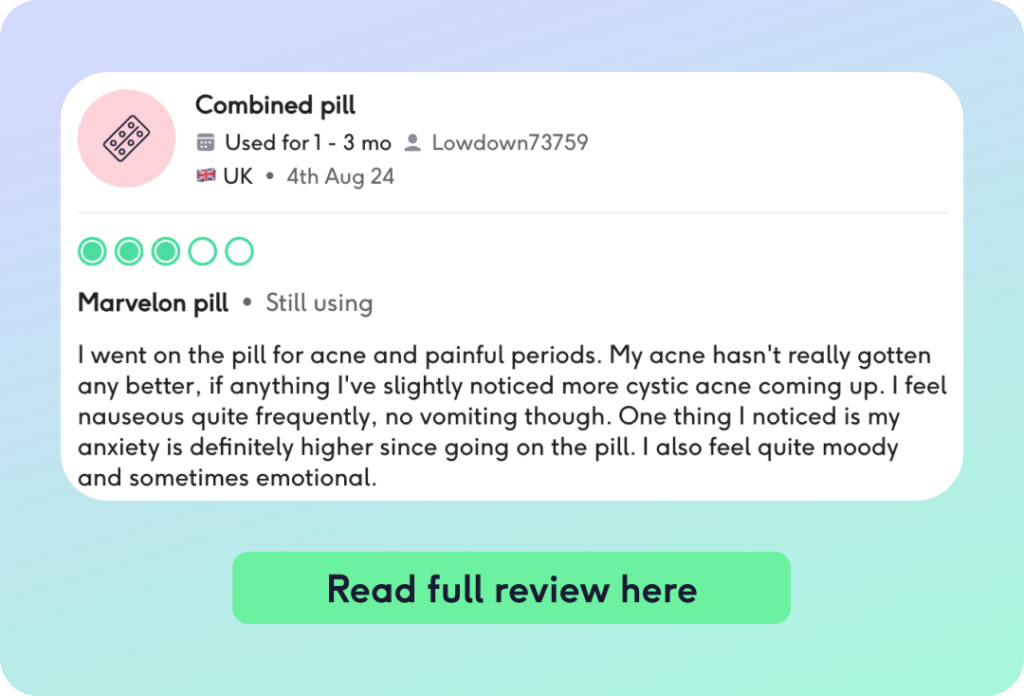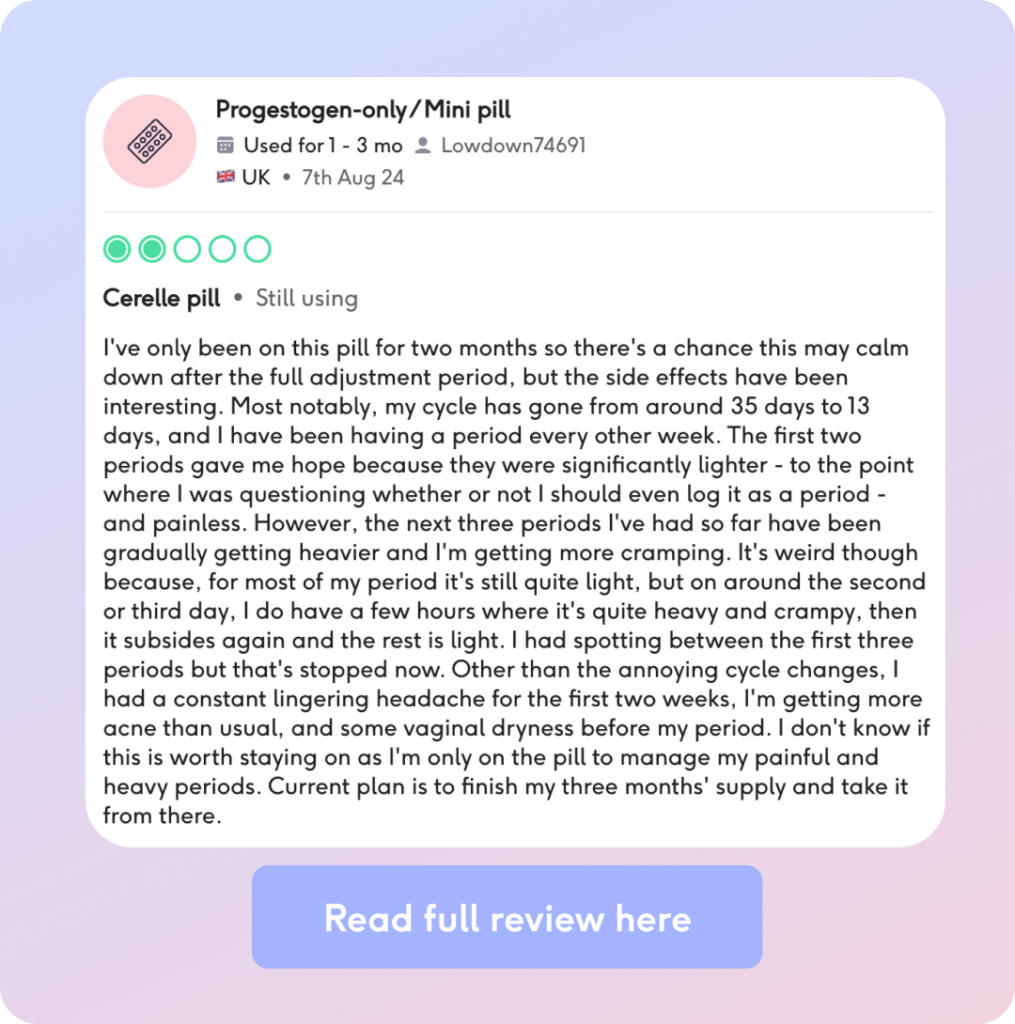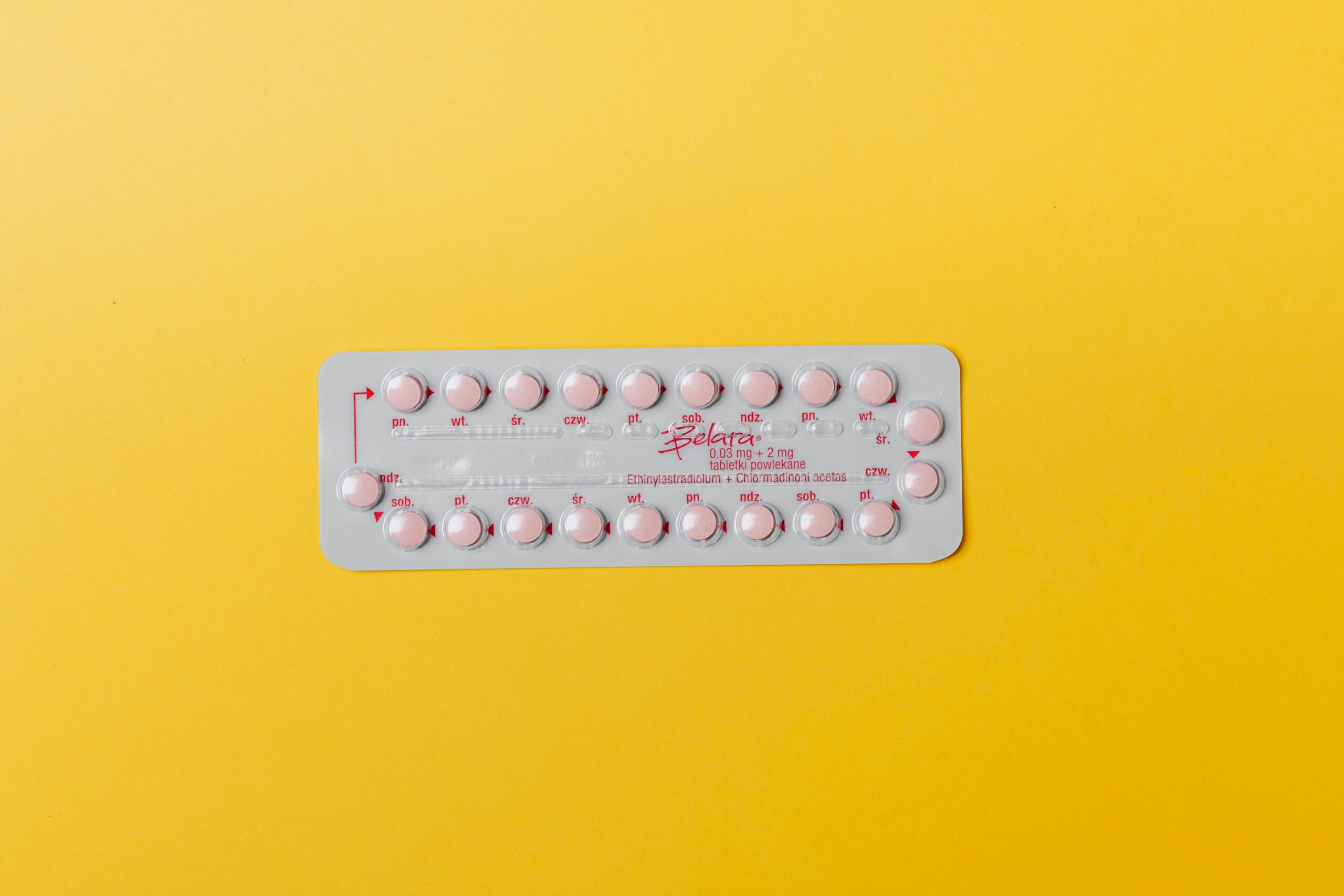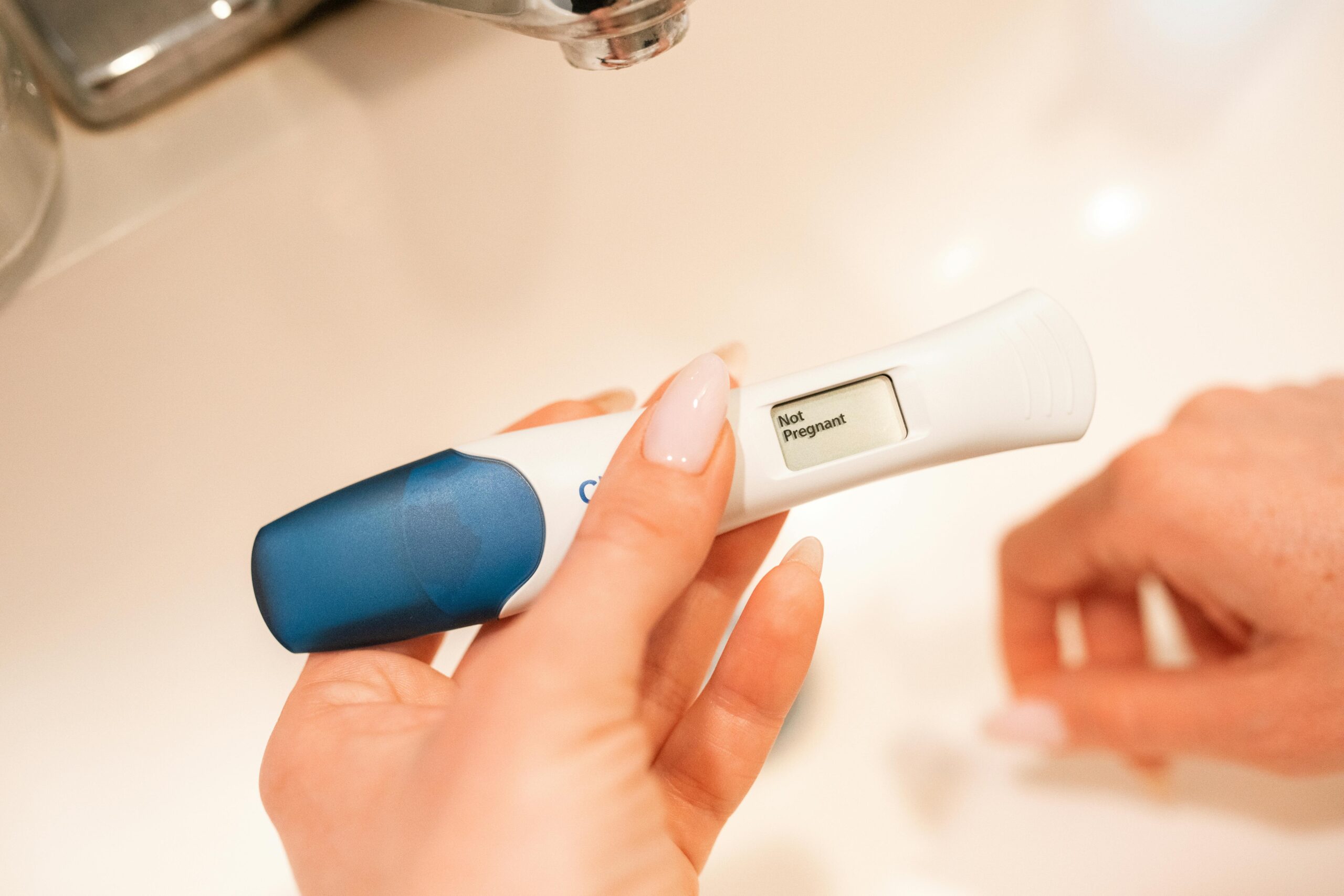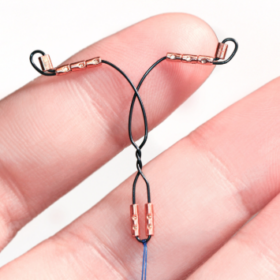
The contraceptive pill and skin problems
In this article
What's the lowdown?
Oestrogen in combined contraception can improve acne
Synthetic progesterone, called progestogen, in different contraceptive methods may cause or worsen acne for some women
Not all progestogens have the same effect on acne
Some progestogens have a higher androgenic activity which means they promote the production of oil in the skin potentially leading to acne
Can the pill cause skin problems?
Wait, isn’t the pill meant to help with skin problems not cause them?
Well, that is true, hormonal birth control can be used as a treatment to improve acne. But it can also cause acne and other skin conditions like eczema, melasma and dermatitis.
No one needs acne. It can cause a real knock in confidence and the last thing we need is to find out it is caused by our contraceptive choice.
Can the pill cause acne?
As we know, there are two types of birth control pills; the combined oral contraceptive (COCP) and the progestogen-only pill (POP).
The COCP is a combination of oestrogen and progestogen (a synthetic form of progesterone), while the POP only contains progestogen. The oestrogen in the COCP usually helps treat acne and can be prescribed as a treatment. However, progestogen is the main culprit of acne. Depending on the type of progestogen used, it can have something called ‘androgenic’ effects on the body, which include flaring acne.
Androgens (eg. testosterone) are a group of hormones that have many functions including to regulate the production of sebum in the body (an oily substance found in your skin). In delicate amounts, the sebum keeps your skin moisturised but if produced in excess, can clog your pores, resulting in acne.
The oestrogen has counteractive effects on testosterone, lowering sebum levels and improving acne. Not all synthetic progesterones trigger or worsen acne, just specific types of progestogen. Here is where it can get a little complicated but bear with us1.
Some progestogens are anti-androgenic (so do not activate the androgen receptors) or have partial-androgenic properties (partially activating the androgen receptors), while others are completely androgenic2.
Potent androgenic progestogens:
- Norethisterone found in Brevinor, Norimin, Norinyl-1, Noriday
- Levonorgestrel found in Rigevidon, Microgynon, Ovranette, Levest, Maexeni, Norgeston
Anti-androgenic progestogens:
- Drospirenone found in Eloine, Yasmin, Yaz, Yacella, Lucette, Dretine, Slynd
- Dienogest found in Qlaira
- Cyproterone acetate found in Dianette
When starting a pill, it’s common to have an initial flare of spots while your body adjusts to the new hormones, but this often improves after 3 weeks with the combined pill and in up to 3 months with the progestogen only pill. But again, we have to say it. It is hard to predict how someone’s skin will react to each type of contraceptive.
Research
A study found that the hormonal coil (IUS), injection and the implant can also worsen acne, while contraceptives with both oestrogen and progestogen like the vaginal ring and COCP can benefit acne3.
1, The implant:
The Nexplanon implant contains a progestogen called etonogestrel. A study looking at 942 women with this implant over 2 years found that 12% complained of acne as a side effect but only 1% felt the need to stop because of this. Another study found that 13% of the users complained of acne with the implant but 13% also reported improvement in acne4.
2, The injection:
The injections like Depo-Provera contain medroxyprogesterone, a long-lasting progestogen that only needs to be taken every 3 months. A study looking at the side effects of the injection found that 8% of their participants complained of acne in the first 3 months and a subsequent 6 months later, that number increased to 14%5.
3, The IUS/hormonal coil:
There are different types of hormonal coil, a high dose like the Mirena and a lower dose like the Jaydess or Kyleena. All of them release levonorgestrel locally into the uterus.
Finland conducted a study looking at the higher dose hormonal coil outcomes in over 17,000 women and found that 35% reported acne, predominantly common in people younger than 33 years old6.
For the lower dose coils, a study of an Asian population of users recorded 3% of the Jaydess users developing acne and 50% of those had the IUS removed due to this side effect7.
Can the pill cause skin pigmentation?
Melasma is a skin condition that presents with brown-grey patches over your face, primarily the cheeks, chin, nose, forehead and lips. The cause of melasma is not fully understood, however we do know that genetics, hormones and UV light all contribute. Up to 50% of women have family members who suffer from the condition, and if you have a light brown skin colour, you may be more affected8. While pregnancy is a common cause of melasma, oral contraceptives are also another trigger9 as it’s driven by oestrogen.
A study found that of 199 participants taking oral contraceptives, 24% of them developed melasma. In a second study with 212 participants, 29% complained of melasma as a side effect. These studies suggest minimising sunlight exposure to help treat melasma. Some women choose to use skin lightening cream or peels, but these can have unpredictable results. There seems to be little benefit from switching oral contraceptives, but non-hormonal options may help10.
Can the pill cause eczema?
Atopic eczema is a skin condition that results in dry, itchy and cracked skin. The most common form of eczema is atopic dermatitis. Usually, eczema presents early in children but in some cases can develop in adults. It is a long-term condition that can improve over time or have flare ups11.
Hormonal changes can definitely trigger skin changes. This may be due to hormonal hypersensitivity or allergies to hormonal contraceptives, or the other substances found in them (like lactose or binders of the pills).
So can the pill cause dry skin? Can the pill cause itchy skin? Yes, especially around the face.
Oestrogen can be a trigger for a skin condition called perioral dermatitis. This looks like eczema on the face, but is actually a different skin condition which may be associated with pregnancy, hormonal contraceptives and premenstrual flares. It causes itchy, dry and possibly red skin around the nose or eyes with small red bumps or pus / fluid filled lumps.
At The Lowdown, we see this more often when people have first started a new pill. Sometimes this improves as your body gets used to the new hormonal contraceptive, and often with plain moisturisers and avoiding make-up. Just don’t use steroid cream as this can make it worse!
Progesterone rash
Progesterone rash is actually a rare cyclical premenstrual skin condition caused by the natural progesterone produced during the luteal phase of our cycle. The skin eruptions occur monthly and start a few days before the onset of menstruation and stop a few days later.
The more you know eh!
So as we’ve learnt, contraceptives can affect your skin. For both the good, or the bad. Often this settles, but if it doesn’t, you know where to go for help – our contraception recommender or our fab women’s health doctors.
Our medical review process
This article has been medically reviewed for factual and up to date information by a Lowdown doctor.

